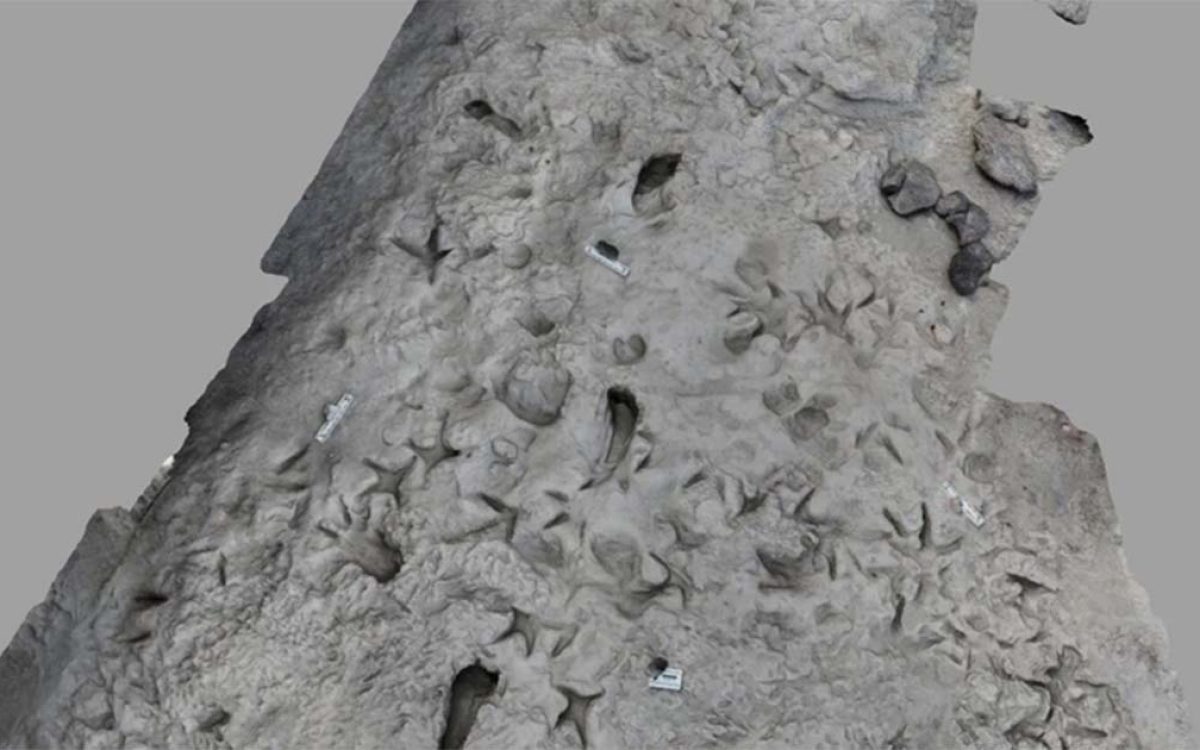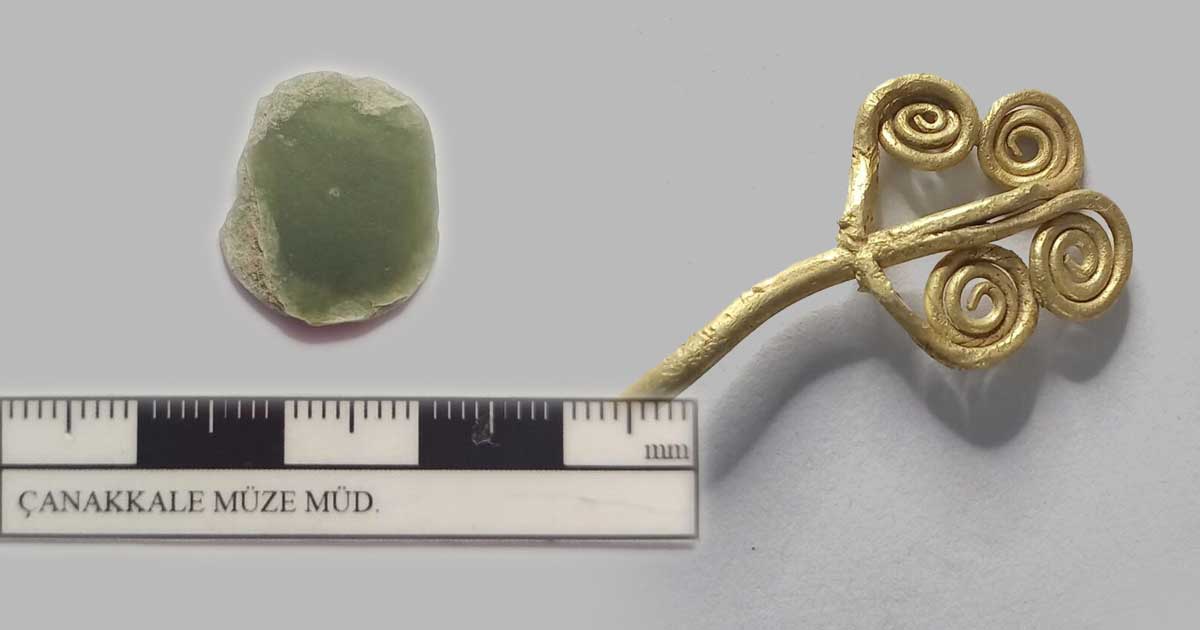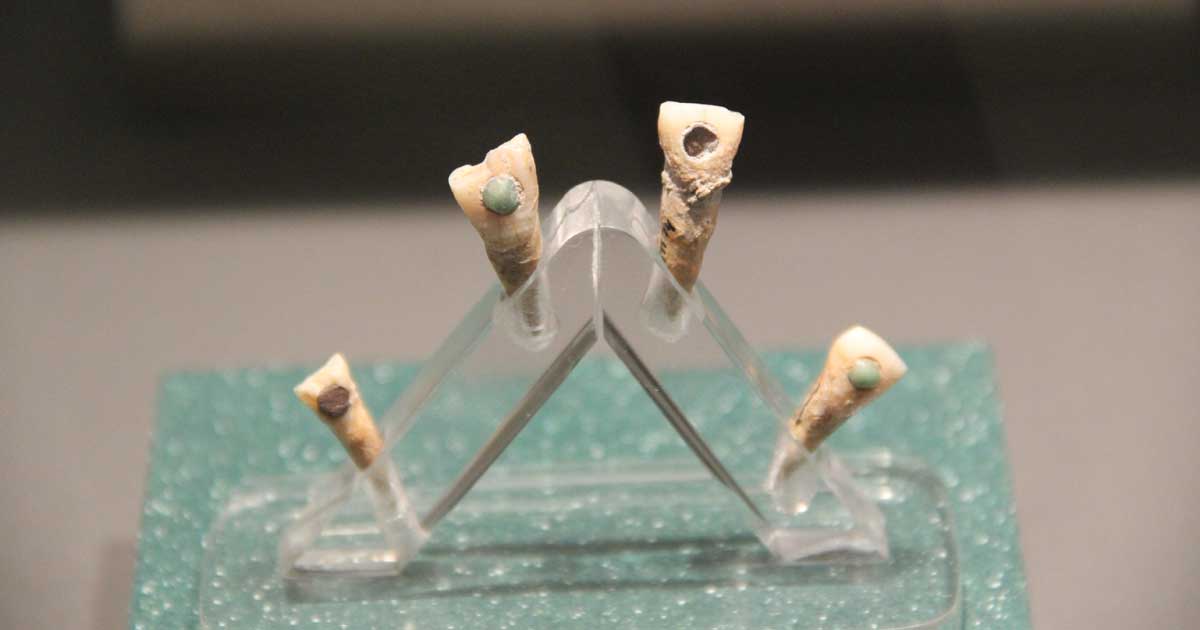Lake Turkana in Kenya feels like an alien world. The lake, brackish and saline, is surrounded by desert and what life survives in the area does so in defiance of its inhospitable surroundings.
But this was not always the case, and the very inhospitable nature of the lake may have preserved something amazing about the lives of the ancient hominins who lived here. According to a new study published in Science, the shores of the lake may have been home to early man, living alongside his close relatives.
According to the study a series of fossilized footprints found along the shores of Lake Turkana shows that two distinct hominin species lived alongside each other, some 1.5 million years ago. These two extinct species, Homo Erectus and Paranthropus Boisei, lived together in the same environment.
Both species are dated to the Pleistocene Era, dated from .5 to 0.75 million years ago. At this time there were multiple hominin species across the globe, all of which would eventually die out by the present day.
- The Wendigo: Native American Stuff of Nightmares
- Roko’s Basilisk: The Thought Experiment That Could Kill You
This find raises a slew of new questions as to how these two species interacted. It is unknown whether they existed in competition for the resources in the area or were happy to coexist, although some aspects of the find suggest the latter.
The footprints found at the site were apparently made within several hours of each other as the two species traversed what Professor Kevin Hatala of Chatham University, lead author of the study, describes as a “perfect zone of mud” on the shoreline. Perfect, that is, for capturing this moment for 1.5 million years.
The first find at the site came in 2021 when a hominin footprint was found alongside tracks of other animals. A follow-up investigation of the area the next year found almost 100 separate tracks from animals in the area, as well as more evidence of hominins: three separate footprints and a series of twelve tracks from Paranthropus Boisei, an australopithecine and close relative of Homo Sapiens.
The gait of the tracks and the impressions made by the isolated footprints, which include tracks attributed to Homo Erectus, do not show evidence of conflict or other disruption but appear regularly long the shoreline. It appears that the two species were happy to share their territory with each other.
This raises an interested hypothesis. Since the species, which would have required the same resources to survive and thrive, did not appear to be competing with each other, could they have been interacting in some way? Could they have even been living in a cooperative environment?
This is not so ridiculous as it might sound. It is possible that Homo Erectus and Paranthropus Boisei were different enough in their adaptations and demands on the environment that they would not have directly impacted on each other in the struggle for resources.
Paranthropus Boisei was a robust hominin, with an exclusively plant based diet and a heavy jaw. Homo Erectus in the other hand was an omnivore, known for its adaptability in an early echo of Homo Sapiens.
This adaptability set up Homo Erectus as ultimately the more successful of the two species. Paranthropus Boisei became extinct around 1.15 million years ago. Homo Erectus, however, almost made it to the present day, with the last remnant populations dying out only some 100,000 years ago.
Original Study: Footprint evidence for locomotor diversity and shared habitats among early Pleistocene hominins.
Header Image: A 3D reconstruction of the area under study, revealing intersecting footprints from two distinct species of hominin. Source: Kevin Hatala / Science.




